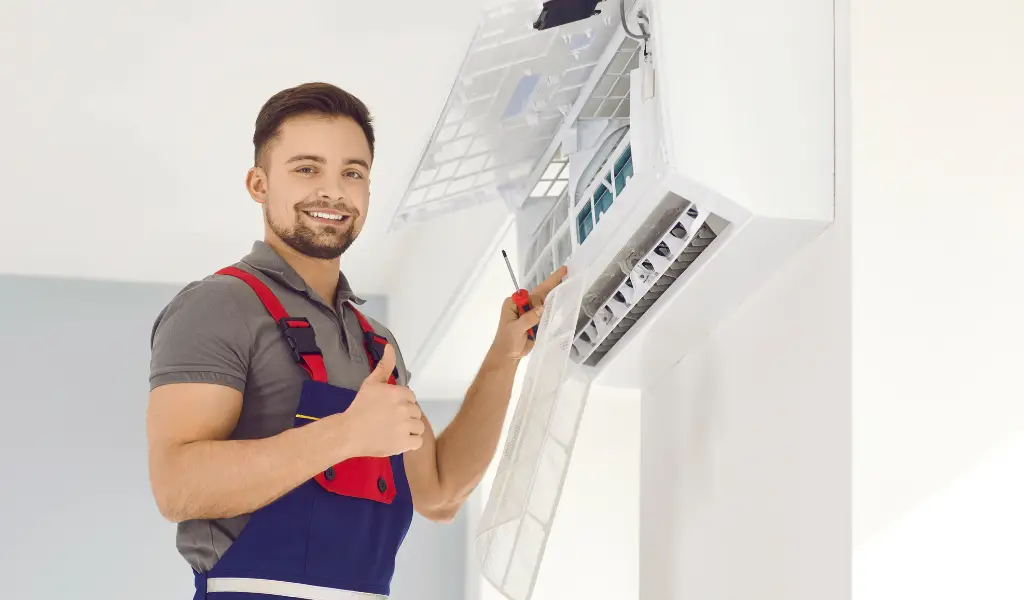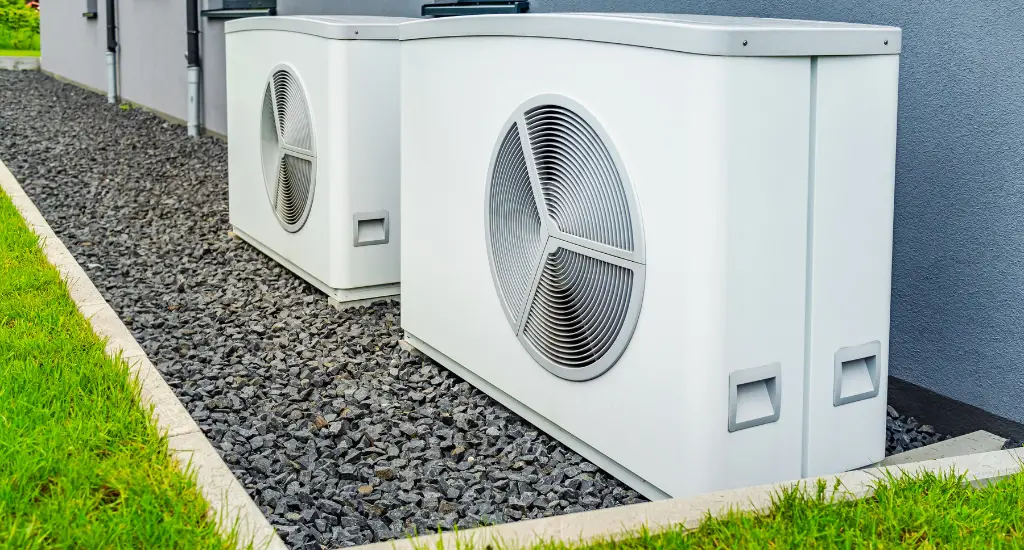When moving into a new home, ensuring a comfortable living environment is crucial, especially when it comes to the hot summer months. A well-installed air conditioner is your key to beating the heat and maintaining a pleasant atmosphere indoors. In this comprehensive guide, we’ll explore the essential tips for installing an air conditioner in a new home, covering everything from assessing your cooling needs to energy-efficient practices.

Assess Your Cooling Needs
Before diving into the installation process, it’s crucial to determine your cooling needs accurately. Start by assessing the size of the space you want to cool. Consider the square footage and factor in regional climate conditions. Understanding your cooling needs helps in selecting an air conditioner that is neither too small, leading to inadequate cooling, nor too large, resulting in unnecessary energy consumption.
Energy efficiency is another vital consideration. Look for Seasonal Energy Efficiency Ratio (SEER) ratings and Energy Star certification when choosing an air conditioner. Higher SEER ratings indicate greater efficiency, leading to long-term energy savings. Additionally, consider your budget, weighing upfront costs against potential energy savings over time.
Select the Right Type of Air Conditioner
There are various types of air conditioning systems available, each with its advantages and disadvantages. Central air conditioning systems provide whole-house cooling, while ductless mini-split systems offer flexibility in zoning. Window units and portable air conditioners are suitable for cooling individual rooms.
The choice depends on your specific needs, budget, and the layout of your home. Consider factors such as installation cost, maintenance requirements, and the aesthetic impact of the unit on your living space. Choose the type of air conditioner that aligns best with your preferences and requirements.
Prepare Your Home for Installation
Proper preparation of your home is crucial for a successful air conditioning installation. If your new home has existing ductwork, inspect it for any damages or leaks. Consider repairing or replacing it if necessary, ensuring proper insulation to maximize efficiency.
Evaluate your electrical system to determine if any upgrades are needed to meet the power requirements of the new air conditioner. Clear the installation area, removing any obstacles that could impede airflow. Proper preparation sets the stage for a smooth installation process and optimal performance of your air conditioner.
Professional Installation vs. DIY
Deciding between professional installation and a do-it-yourself (DIY) approach is a crucial consideration. While DIY installation may seem cost-effective, it comes with challenges. Installing an air conditioner involves electrical work, refrigerant handling, and complex system connections. If done incorrectly, it can lead to inefficiencies, increased energy consumption, and even safety hazards.
Professional Air Conditioning installation ensures that the air conditioner is correctly installed, meeting all safety and regulatory standards. It also saves you from potential costly mistakes. While DIY may be suitable for small window units, it’s recommended to hire a professional for more complex installations to guarantee optimal performance and longevity.
Obtain Necessary Permits and Compliance
Before starting the installation, research local building codes and regulations. Obtain the necessary permits to ensure compliance with local laws. This step is crucial to avoid legal issues and ensures that your air conditioning system meets safety and environmental standards.
Consider noise regulations and zoning requirements specific to your area. Some locations have restrictions on the noise levels generated by outdoor units, and zoning regulations may dictate where the unit can be placed. Familiarizing yourself with these regulations ensures a smooth installation process without any unexpected setbacks.
Installation Process
Once you have assessed your cooling needs, selected the right type of air conditioner, and prepared your home, it’s time to dive into the installation process. Follow these steps for a successful installation:
| Preparing the Air Conditioning Unit |
| Before installation, inspect the air conditioning unit for any defects. Assemble the components according to the manufacturer’s instructions, ensuring that all parts are in good condition. This step sets the foundation for a trouble-free installation process. |
| Installing the Outdoor Unit |
| Carefully choose the location for the outdoor unit, considering factors such as shade, airflow, and accessibility. Proper placement is crucial for optimal performance and energy efficiency. Mount the unit securely, ensuring that it is level and stable. |
| Installing the Indoor Unit |
| Select an appropriate location for the indoor unit, typically placed in a central area for optimal airflow. Ensure proper ventilation around the unit, avoiding obstructions that could hinder its performance. Follow the manufacturer’s guidelines for installation, taking care to secure the unit safely. |
| Connecting Refrigerant Lines |
| Connect the refrigerant lines, paying attention to proper insulation to prevent energy loss. Seal all connections tightly to avoid refrigerant leaks, which can compromise the efficiency of the system. Proper handling of refrigerants is essential for both environmental and safety reasons. |
| Electrical Connections and Testing |
| Wiring the air conditioning unit correctly is crucial for safe and efficient operation. Follow the wiring diagram provided by the manufacturer, or hire a professional electrician for this step. After completing the electrical connections, conduct thorough performance tests to ensure that the system is functioning as intended. |
How To Maintain Your Air Conditioner
Proper maintenance is essential for the longevity and efficiency of your air conditioner. Implement the following practices to keep your system in top condition:
| Regular Cleaning and Maintenance Tasks | Schedule regular cleaning of both the indoor and outdoor units. Remove debris, dust, and dirt that can accumulate over time. Check the evaporator and condenser coils, fins, and filters regularly, cleaning or replacing them as needed. |
| Changing Filters | Air filters play a crucial role in maintaining indoor air quality and system efficiency. Follow the manufacturer’s recommendations for filter replacement frequency. Clean or replace filters regularly to prevent airflow restrictions and strain on the system. |
| Seasonal Check-ups | Consider scheduling seasonal check-ups with a professional HVAC technician. They can inspect the entire system, identify potential issues, and perform necessary maintenance tasks. Seasonal check-ups help prevent major problems and ensure that your air conditioner operates at peak efficiency. |
| Troubleshooting Common Issues | Be aware of common air conditioner issues and their troubleshooting steps. Issues such as inadequate cooling, strange noises, or water leakage can often be resolved with basic troubleshooting. Refer to the user manual or seek professional assistance if needed. |
Energy-Efficient Practices
In addition to proper installation and maintenance, adopting energy-efficient practices can further enhance the performance of your air conditioning system:
| Setting Optimal Temperature | Set your thermostat to an optimal temperature for comfort and energy efficiency. Avoid extreme temperature settings, as they can result in increased energy consumption. |
| Proper Use of Programmable Thermostats | Invest in a programmable thermostat to schedule temperature adjustments based on your daily routine. This helps optimize energy usage, reducing costs and environmental impact. |
| Utilizing Zoning Features (if applicable) | If your air conditioning system supports zoning features, take advantage of them. Zoning allows you to control the temperature in different areas of your home independently, optimizing energy usage based on occupancy. |
A Cool and Comfortable Future for Your New Home

In conclusion, installing an air conditioner in a new home involves careful planning, preparation, and execution. Assessing your cooling needs, selecting the right type of air conditioner, and preparing your home are crucial steps in the process. While DIY installation may be tempting, hiring a professional ensures safety, compliance with regulations, and optimal performance.
Regular preventive maintenance is key to the longevity of your air conditioner. Implementing energy efficient practices further enhances the system’s performance, providing comfort while minimizing environmental impact. By following these tips, you can enjoy a cool and comfortable living space in your new home throughout the seasons.



